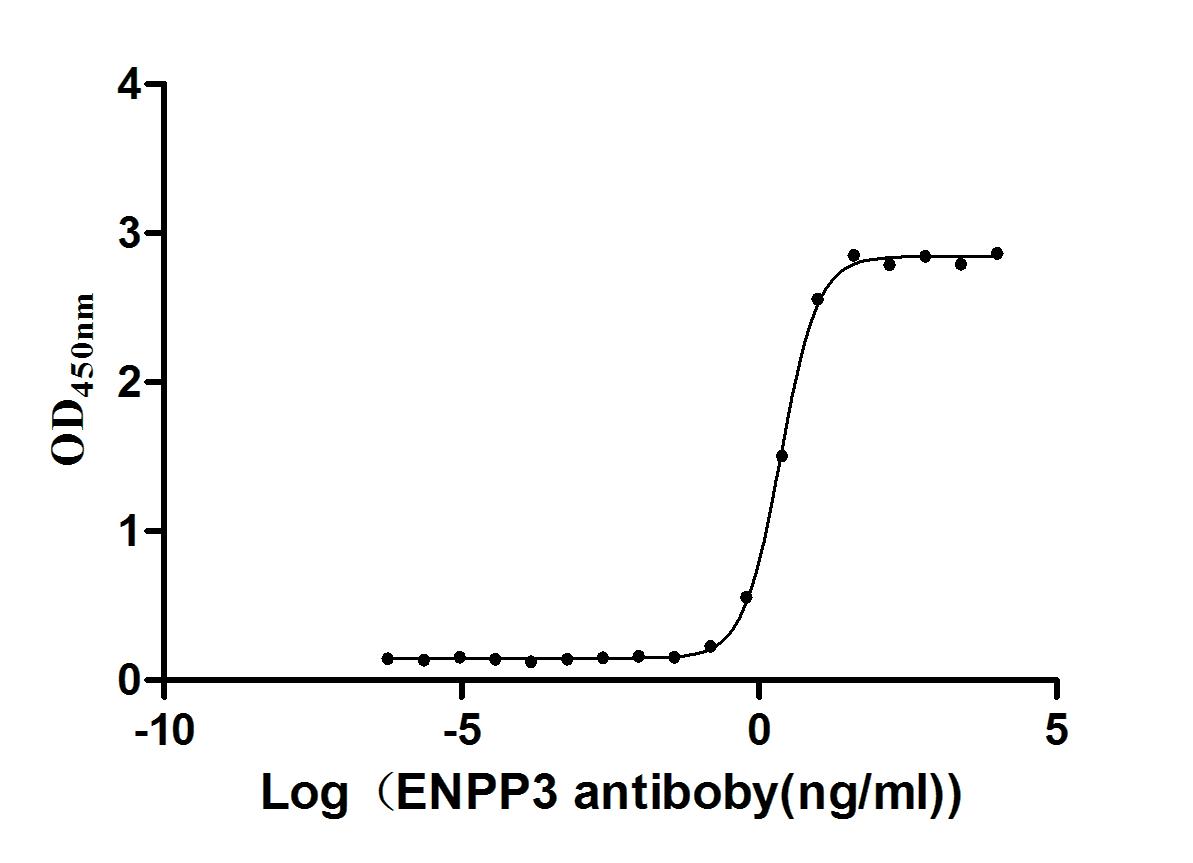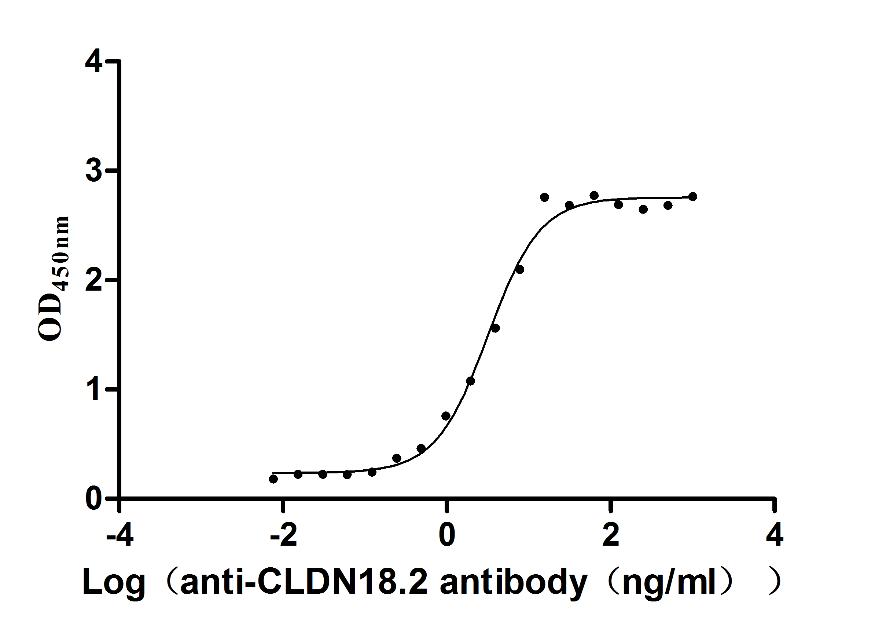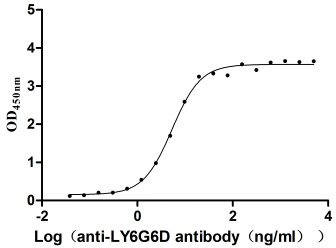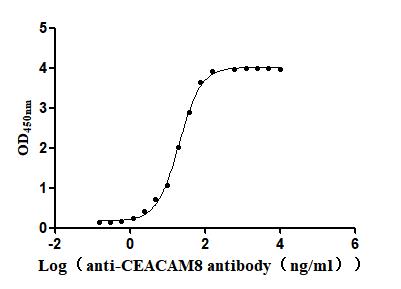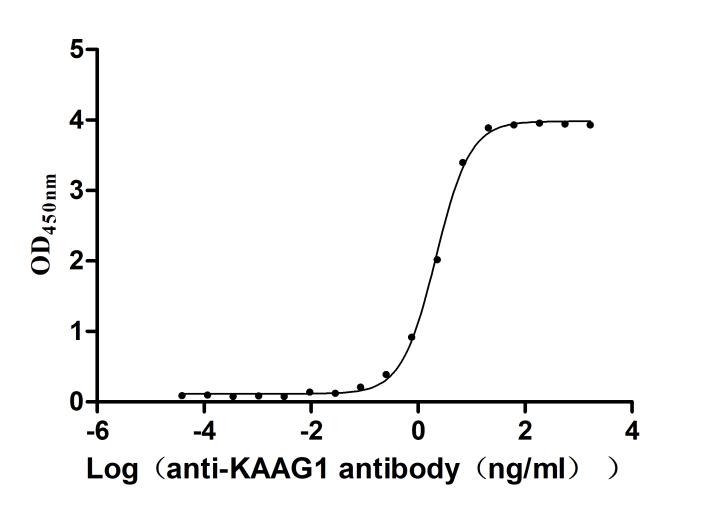Recombinant Human Dyslexia-associated protein KIAA0319 (KIAA0319), partial
-
中文名称:人KIAA0319重组蛋白
-
货号:CSB-YP730134HU
-
规格:
-
来源:Yeast
-
其他:
-
中文名称:人KIAA0319重组蛋白
-
货号:CSB-EP730134HU
-
规格:
-
来源:E.coli
-
其他:
-
中文名称:人KIAA0319重组蛋白
-
货号:CSB-EP730134HU-B
-
规格:
-
来源:E.coli
-
共轭:Avi-tag Biotinylated
E. coli biotin ligase (BirA) is highly specific in covalently attaching biotin to the 15 amino acid AviTag peptide. This recombinant protein was biotinylated in vivo by AviTag-BirA technology, which method is BriA catalyzes amide linkage between the biotin and the specific lysine of the AviTag.
-
其他:
-
中文名称:人KIAA0319重组蛋白
-
货号:CSB-BP730134HU
-
规格:
-
来源:Baculovirus
-
其他:
-
中文名称:人KIAA0319重组蛋白
-
货号:CSB-MP730134HU
-
规格:
-
来源:Mammalian cell
-
其他:
产品详情
-
纯度:>85% (SDS-PAGE)
-
基因名:KIAA0319
-
Uniprot No.:
-
别名:DLX 2; DLX2; DYLX 2; DYLX2; Dyslexia susceptibility 2; Dyslexia-associated protein KIAA0319; DYX 2; DYX2; K0319_HUMAN; Kiaa0319; MGC176717
-
种属:Homo sapiens (Human)
-
蛋白长度:Partial
-
蛋白标签:Tag type will be determined during the manufacturing process.
The tag type will be determined during production process. If you have specified tag type, please tell us and we will develop the specified tag preferentially. -
产品提供形式:Lyophilized powder
Note: We will preferentially ship the format that we have in stock, however, if you have any special requirement for the format, please remark your requirement when placing the order, we will prepare according to your demand. -
复溶:We recommend that this vial be briefly centrifuged prior to opening to bring the contents to the bottom. Please reconstitute protein in deionized sterile water to a concentration of 0.1-1.0 mg/mL.We recommend to add 5-50% of glycerol (final concentration) and aliquot for long-term storage at -20℃/-80℃. Our default final concentration of glycerol is 50%. Customers could use it as reference.
-
储存条件:Store at -20°C/-80°C upon receipt, aliquoting is necessary for mutiple use. Avoid repeated freeze-thaw cycles.
-
保质期:The shelf life is related to many factors, storage state, buffer ingredients, storage temperature and the stability of the protein itself.
Generally, the shelf life of liquid form is 6 months at -20°C/-80°C. The shelf life of lyophilized form is 12 months at -20°C/-80°C. -
货期:Delivery time may differ from different purchasing way or location, please kindly consult your local distributors for specific delivery time.Note: All of our proteins are default shipped with normal blue ice packs, if you request to ship with dry ice, please communicate with us in advance and extra fees will be charged.
-
注意事项:Repeated freezing and thawing is not recommended. Store working aliquots at 4°C for up to one week.
-
Datasheet :Please contact us to get it.
相关产品
靶点详情
-
功能:Involved in neuronal migration during development of the cerebral neocortex. May function in a cell autonomous and a non-cell autonomous manner and play a role in appropriate adhesion between migrating neurons and radial glial fibers. May also regulate growth and differentiation of dendrites.
-
基因功能参考文献:
- By suggesting the presence of common biological processes underlying reading (dis)ability, these findings represent initial support for a generalist effect of the non-additive interdependence between READ1 and the KIAA0319 risk haplotype and can help in clinically assessing the individual risk for Developmental dyslexia. PMID: 29066855
- These findings suggest that DNA methylation patterns in the KIAA0319 promoter region might be associated with cognitive control processes that are necessary to perform well in the forced-attention conditions. PMID: 28958754
- The study corroborates the importance of rs2038137-KIAA0319, and rs6935076-KIAA0319 in the aetiology of dyslexia. The relevance of rs2038137-KIAA0319, and rs6935076-KIAA0319 was further supported by the meta-analysis. PMID: 27312598
- a meta-analysis of association studies involving KIAA0319 polymorphisms and Developmental Dyslexia risk, is reported. PMID: 27464509
- Missense variant in DYX2 gene is associated with reading disability. PMID: 28866788
- Two SNPs in the KIAA0319 gene were nominally associated with rapid naming, and these associations were stable across different ages in longitudinal data set from the Dutch Dyslexia Program. PMID: 28074887
- Study establishes KIAA0319 as a novel player in axon growth and regeneration with the ability to repress the intrinsic growth potential of axons; describes a novel regulatory mechanism operating during peripheral nervous system and central nervous system axon growth, and offers novel targets for the development of effective therapies to promote axon regeneration PMID: 28334068
- This study indicated that genetic polymorphisms of KIAA0319 are associated with an increased risk of DD in the Uyghur population. PMID: 27098879
- The KIAA0319 gene is associated with both reading ability and general cognition, but in different ways. The effect on IQ appears to occur earlier in development and is transient, whereas the effect of reading ability occurs later and is moderated by antenatal maternal stress. PMID: 27465261
- Markers in DYX2 genes KIAA0319 and FAM65B were associated with cortical thickness in the left developing orbitofrontal region and global fractional anisotropy, respectively. KIAA0319 and ACOT13 were suggestively associated with overall fractional anisotropy and left pars opercularis cortical thickness, respectively. PMID: 25953057
- These results indicate that KIAA0319L is the fourth of four candidate dyslexia susceptibility genes that is involved in neuronal migration, which supports the association of abnormal neuronal migration with developmental dyslexia. PMID: 23831424
- the association of DCDC2 and KIAA0319 with Developmental dyslexia in Chinese population should be further validated PMID: 25230923
- our findings suggest that KIAA0319 is associated with a reading-related cognitive skill PMID: 25015435
- KIAA0319 and ROBO1 genes, and developmental dyslexia (DD), related neuropsychological phenotypes and comorbid language and mathematical (dis)abilities in a large cohort of 493 Italian nuclear families ascertained through a proband with a diagnosis of DD. PMID: 24430574
- This study demonstrated the association of developmental dyslexia with rs4504469 of KIAA0319 and not with any single-nucleotide polymorphisms of DCDC2. PMID: 23677054
- results suggested that the 931C > T variant in KIAA0319, but not the -3G > A in DYX1C1, was significantly associated with the risk of dyslexia PMID: 23065966
- The results of this study found that KIAA0319 gene contained polymorphisms that were significantly associated with white matter volume in the left temporo-parietal region and that white matter volume influenced reading ability. PMID: 22683091
- Association study of a functional genetic variant in KIAA0319 in German dyslexics. PMID: 21934641
- Mutations in cilia co-expressed DCDC2, DYX1C1 and KIAA0319 genes are associated with a cognitive neurological disorder, dyslexia. PMID: 22558177
- The Kiaa0319 plays a role in neuronal migration during embryonic development, and that early interference with this gene results in an array of behavioral deficits including impairments in rapid auditory processing and simple spatial learning. PMID: 22326444
- The results of this study confirmed that both FOXP2 and KIAA0319/TTRAP/THEM2 genes play an important role in human language development, but probably through different cerebral pathways. PMID: 22262880
- We provide further support for the role of KIAA0319 and DCDC2 in contributing to reading abilities PMID: 21457949
- We identified four rare variants that were significantly associated with the late MMN component. PMID: 21104116
- At this point, there is no statistical evidence of association between the allelic variation in the three candidate genes and DD in our sample. PMID: 21203818
- These results support previous studies indicating the 5' region of the KIAA0319 gene as the location of risk alleles contributing to RD. PMID: 21207242
- KIAA0319 not only has a direct role in neuronal migration but may also have additional signaling functions. PMID: 20943657
- acetylated H3 histones in KIAA0319 have a role in reading disabilities PMID: 19588467
- The results provide additional supportive evidence linking candidate dyslexia susceptibility genes to migrational disturbances during brain development, and extends the role of Kiaa0319 to include growth and differentiation of dendrites. PMID: 19679544
- Strong evidence that KIAA0319 on chromosome 6p is a susceptibility gene for developmental dyslexia. PMID: 15717286
- The risk haplotype on chromosome 6p22.2 down-regulates the KIAA0319 gene which is required for neuronal migration during the formation of the cerebral neocortex. PMID: 16600991
- a multilocus effect in or near KIAA0319 may influence variation in reading ability. PMID: 17597587
- widely expressed in adult brain; alternative splicing variants are detected PMID: 17846832
- results suggest that KIAA0319 could be involved not only in cell-cell interactions, but also in signalling PMID: 18063668
- we found a nominally significant association for the quantitative dimension "word reading" and KIAA0319 genotype PMID: 18810304
- KIAA0319 protein is associated with dyslexia. PMID: 18829873
- identified seven single-nucleotide polymorphisms on the risk haplotype immediately upstream of KIAA0319 and determined that three of these are strongly associated with multiple reading-related traits PMID: 19325871
- The dyslexia-associated protein KIAA0319 interacts with adaptor protein 2 and follows the classical clathrin-mediated endocytosis pathway. PMID: 19419997
显示更多
收起更多
-
相关疾病:Dyslexia 2 (DYX2)
-
亚细胞定位:Cell membrane; Single-pass type I membrane protein. Early endosome membrane; Single-pass type I membrane protein.
-
组织特异性:Detected in adult brain cortex and fetal frontal lobe (at protein level). Highly expressed in brain cortex, putamen, amygdala, hippocampus and cerebellum.
-
数据库链接:
Most popular with customers
-
Recombinant Human Tumor necrosis factor receptor superfamily member 9 (TNFRSF9), partial (Active)
Express system: Mammalian cell
Species: Homo sapiens (Human)
-
Recombinant Human Claudin-18.2 (CLDN18.2)-VLPs (Active)
Express system: Mammalian cell
Species: Homo sapiens (Human)
-
Express system: Mammalian cell
Species: Homo sapiens (Human)
-
Recombinant Macaca fascicularis Claudin 18.2 (CLDN18.2)-VLPs (Active)
Express system: Mammalian cell
Species: Macaca fascicularis (Crab-eating macaque) (Cynomolgus monkey)
-
Recombinant Macaca fascicularis lymphocyte antigen 6 family member G6D (LY6G6D) (Active)
Express system: Yeast
Species: Macaca fascicularis (Crab-eating macaque) (Cynomolgus monkey)
-
Recombinant Human Carcinoembryonic antigen-related cell adhesion molecule 8(CEACAM8) (Active)
Express system: Mammalian cell
Species: Homo sapiens (Human)
-
Recombinant Human Kidney-associated antigen 1(KAAG1) (Active)
Express system: E.coli
Species: Homo sapiens (Human)
-
Recombinant Human Urokinase-type plasminogen activator(PLAU) (Active)
Express system: Mammalian cell
Species: Homo sapiens (Human)


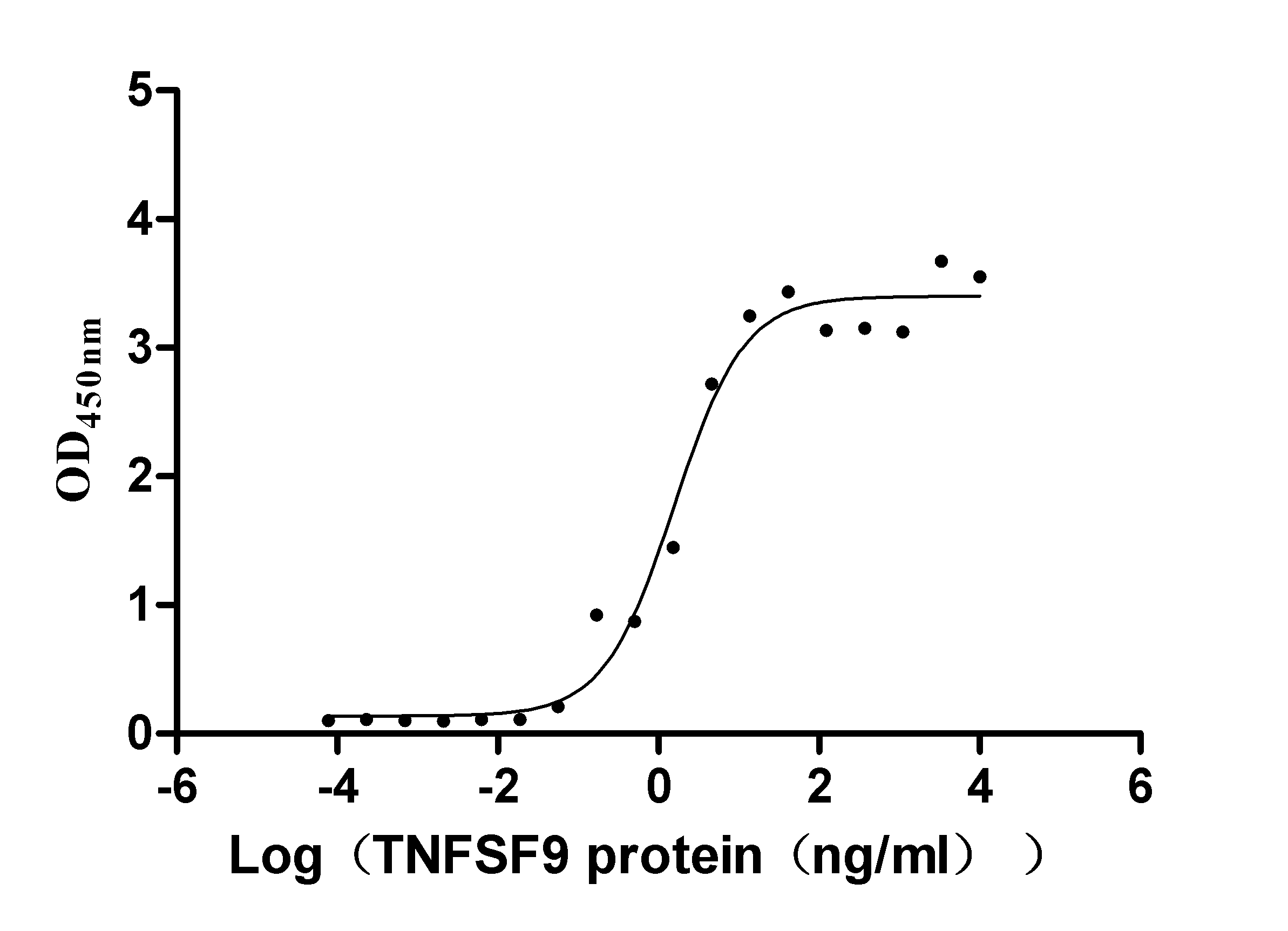
-AC1.jpg)
